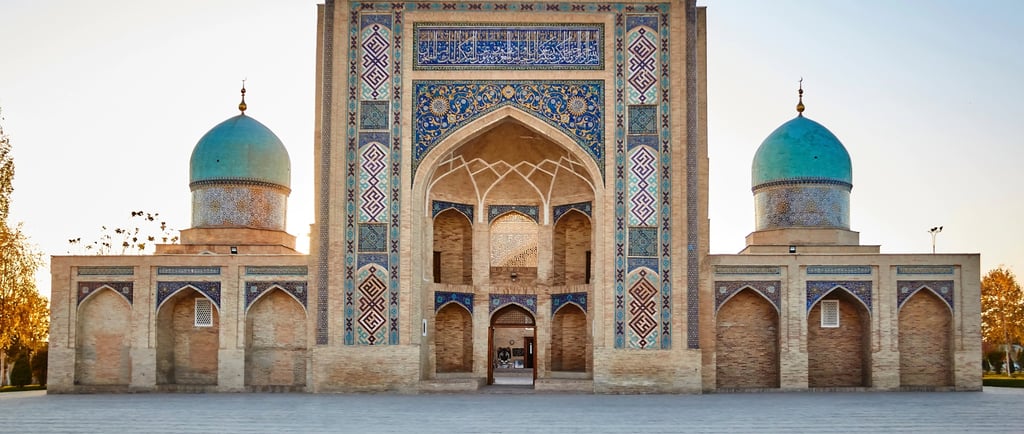The New Geopolitics of Central Asia
Geopolitical dynamics in Central Asia have been influenced by a three-way competition for influence among Russia, China, and Turkey, resulting in a complicated triangle of influence and a challenge for Central Asian states to maintain independence. Will this complex competition create a new framework for regional stability, or risk a multi-user power struggle?
CHINATURKEYRUSSIA
Ermek Esankanov
6/6/20253 min read


Over the past ten years, Central Asia has once again been the site of a multi-user race for influence between three aspiring powers: Russia, China, and Turkey. Given the evolution of historical alliances and shifts in global power structures, Moscow, Beijing, and Ankara are all engaged in varying efforts to increase their footprint in a region that sits at the intersection of Eurasia. Though their approaches vary in nuance and intensity, the end result is a complicated triangle of influence in which Central Asian states are striving to walk a line that allows them to maintain a degree of independence, while also not fully antagonizing the influence of one or more of their powerful neighbors.
Historically, all influence in Central Asia lay with Russia, which it acquired through its Soviet inheritance. Moscow's access to the region remained intact via a relationship with the CSTO on the military side, labour migration capabilities, and deep cultural and linguistic connections. But Russia's continuing war in Ukraine, along with resultant economic and diplomatic attrition, has weakened its ability to credibly project power and has ultimately limited its ability to exert influence within Central Asia. While, for now, Moscow has enough strategic depth, particularly in regards to security cooperation, there are multiple dimensions through which players are beginning to affect Russia’s former monopoly on influence during the Soviet era.
While China has transformed to become an economic heavyweight, being the region's largest investor, in terms of facilities and infrastructure investment, this has not been enough to constrain Russian influence. To date, Beijing has invested more than $40 billion into Central Asia through the Belt and Road Initiative (BRI), which was unveiled in 2013, the China-Kyrgyzstan-Uzbekistan railway, and the Khorgos dry port in Kazakhstan. These and other similar projects have fundamentally changed how Central Asia's transportation and trading infrastructure is organized. It has also expanded soft power explicitly (through Confucius Institutes, study abroad programs, and media presence), and implicitly (through economic presence), resulting in a growing presence that is pragmatic, identified with long-term investment, lacking ideological wrappers, which can be attractive and difficult to say no to.
The third node in the triangular balance of power is Turkey. Although not comparable to the military presence of Russia or the economic heft of China, Turkey has been willing to lean into its cultural and linguistic ties with the Turkic nations of the region (especially Kazakhstan, Kyrgyzstan, Uzbekistan, and Turkmenistan). Through the Organization of Turkic States (OTS), Turkey has made a modest claim to be the leader and self-proclaimed voice of the larger "Turkic world" through promotion of pan-Turkic identity, shared history, and with an eye on a shared future based upon strategic cooperation. The impact of Turkey is further amplified by its more vibrant private sector, media footprint, and ongoing and active diplomacy.
Central Asian states, meanwhile, should not be seen as passive players in this triangle. They are not launching themselves towards one single patron; rather, they will seek partnerships along multiple vectors to deflect pressure from external actors. The multi-vector foreign policy of Kazakhstan, the regional diplomacy of Uzbekistan under President Mirziyoyev, and the semi-pragmatic behaviour of Kyrgyzstan toward the three powers to ensure maximum benefits for the region while avoiding excessive dependency are all good examples of this. But while balance is required, it is becoming exceedingly more difficult as competition increases between Moscow, Beijing, and Ankara.
The geopolitical stakes for Central Asia are considerable. Russia will seek to consolidate its traditional space of hegemony: China will pursue long-term economic integration, and Turkey will develop cultural and strategic positioning. This situation presents both opportunity and risk for Central Asian states. Economic diversification, infrastructure development, and diplomatic support will be possible, but at the expense of sovereignty, political reliance, and geopolitical entanglements.
Ultimately, whether Central Asia is able to carve out a space independent from the influence of these three players will depend on the strategic foresight of regional leaders. If Astana, Tashkent, and Bishkek can continue to skillfully navigate the competing interests of these powers, Central Asia could emerge as more than just a player in a great power game and solidify its position as a pivot point to shift the geopolitical dynamics of Eurasia.


